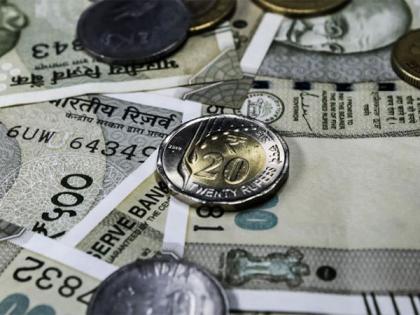Rupee may depreciate to 88.5 per USD amid fresh US tariffs: Report
By ANI | Updated: August 1, 2025 08:54 IST2025-08-01T08:49:06+5:302025-08-01T08:54:38+5:30
New Delhi [India], August 1 : The Indian Rupee is likely to weaken further to 88.5 per U.S. dollar ...

Rupee may depreciate to 88.5 per USD amid fresh US tariffs: Report
New Delhi [India], August 1 : The Indian Rupee is likely to weaken further to 88.5 per U.S. dollar following the imposition of fresh tariffs by U.S. President Donald Trump, according to a report by ICICI Bank.
The report noted that the Rupee has already depreciated by 2.4 per cent since the beginning of the calendar year and is currently trading at 87.55 per U.S. dollar, as per the Reserve Bank of India.
From a Real Effective Exchange Rate (REER) perspective, the Rupee remains fairly competitive at around 100.
Interestingly, the U.S. Dollar index has declined by 8 per cent so far this year. However, the current month has seen the Dollar index appreciating again as several trade deals are being signed. This has led to a general depreciation trend in most currencies, including the Indian Rupee.
"Till such time we have further clarity, we expect INR to trade with a depreciation bias around 87-88.5 levels," the report said.
The fresh U.S. tariffs on India have been raised to 25 per cent, up from the earlier baseline of 10 per cent. These rates are also higher than the 15-20 per cent tariffs imposed on most Asian exporters, excluding China.
The report explained that after heavy import activity in the first half of the year, U.S. imports were anyway expected to ease. If the higher tariff levels continue, India's exports to the U.S. are expected to soften, which could negatively impact economic growth.
Exports to non-U.S. destinations were already down by 2.9 per cent year-on-year in the first quarter of FY2026. This decline may accelerate in the coming months.
With tariffs increasing by around 20 per cent from previous levels for India, and assuming a demand elasticity of 1.0, a drop in demand is expected, not just for India, but for most Asian countries facing similar tariffs.
While a 20 per cent higher tariff could result in a 0.3-0.4 per cent drag on India's GDP, the overall impact may be limited to 0.1-0.2 per cent if exports to other regions pick up.
The actual impact will also depend on how global oil prices move. A slowdown in global growth could reduce oil prices, but additional sanctions on Russian crude may act as a counter-force.
Disclaimer: This post has been auto-published from an agency feed without any modifications to the text and has not been reviewed by an editor
Open in app